Northeastern Traditions and Culture
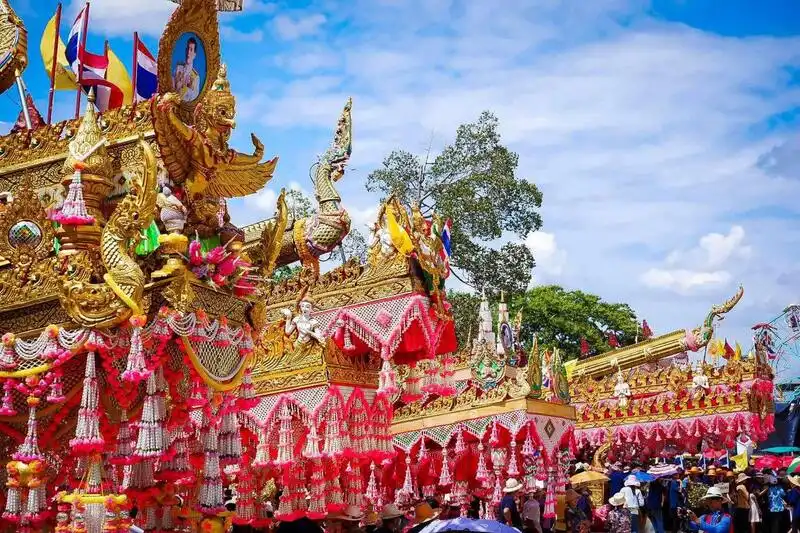
Rating: 2.7/5 (179 votes)
Nakhon Ratchasima attractions
Attractions in Thailand
Northeastern Traditions and Culture Northeastern Traditions and Culture Isaan is limited in natural resources. from dry weather in the dry season The water will flood both sides of the river. Most of the population live on the hills not far from the river, reflecting the wisdom of the settlement. and adaptation to the environment The area in the Northeast used to be in the area influenced by Khmer civilization. And is the habitat of the Tai-Lao people, which make various groups. Mixing various cultures together and continually inherited from one another to become an Isan culture with characteristics unique and interesting.
Northeastern (ภาคอีสาน) Located on the Korat Plateau The Mekong River borders the northern region. and east of the region by the southern side to the Cambodian border In the west there is the Phetchabun mountain range. The Dong Phayayen mountain range is a barrier separating the northern and central regions. The highest mountain range in the northeastern region is Phu Kradueng Peak, which is the source of important rivers of the northeastern people such as the Chi River, the Mun River and Lam Ta Khong River. An area of approximately 170,000 square kilometers. which is comparable to one-third of the total area of Thailand Which consists of the following provinces: Chaiyaphum Province, Nakhon Phanom Province, Buriram Province, Nakhon Ratchasima Province, Ubon Ratchathani Province, Amnat Charoen Province, Kalasin Province Khon Kaen Province, Bueng Kan Province, Maha Sarakham Province, Mukdahan Province, Yasothon Province, Roi Et Province, Loei Province, Sakon Nakhon Province, Sisaket Province, Nong Khai Province, Nong Bua Lamphu Province, Surin Province and Udon Thani Province.
Northeastern traditions and rituals according to the traditions of the Northeastern people It has to do with belief in supernatural powers. and Theravada Buddhism There are both traditional rituals that are practical. and traditions that have been passed down from generation to generation The important northeastern traditions are as follows.
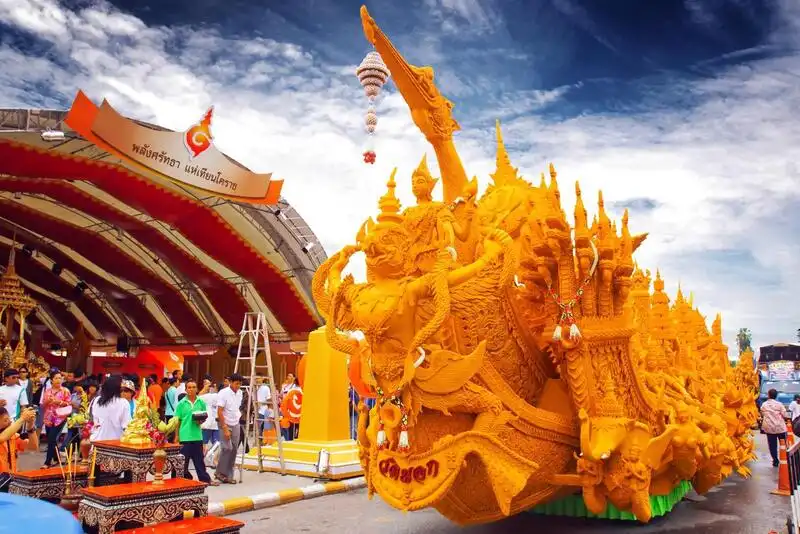
1. Tradition of Candle Procession Northeastern traditions For the candle contest, it is considered to be His Majesty's grace. HRH Princess Maha Chakri Sirindhorn Princess Maha Chakri Sirindhorn Her Royal Highness Princess Maha Chakri Sirindhorn gives trophies to winners every year. Both Thai tourists and foreigners Come and see the splendor of the Lent candle tree. Each of them is the result of the efforts of skilled candle makers. Create and carve a beautiful candle tree. It can be said that the craftsmanship of Korat candle makers is unbeatable.
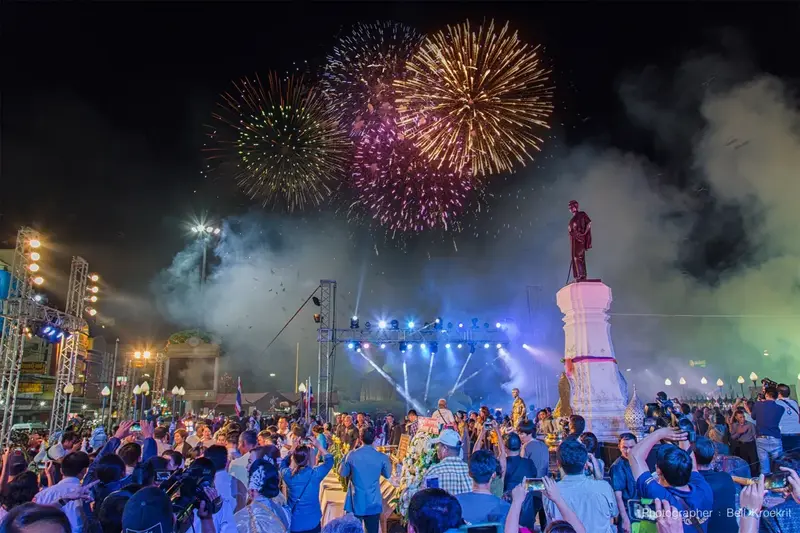
2. Celebration of Thao Suranaree's Victory Day Northeastern traditions during the period from March 23 to April 3 of each year is the annual event of the province, which begins on March 23 of every year. This is considered the time when Thao Suranaree (Khunying Mo) won victory from the enemy because March 23, 1826 was the day that Chao Anuwong left the city of Nakhon Ratchasima. Therefore, it is a tradition to remember the courage in that heroic deed. In addition, there are cultural performances, fairs, exhibitions of government agencies and the private sector. Including entertainment activities that rotate each day This activity aims to boost the morale of the citizens. Be a role model for citizens to recognize the person who is regarded as a precursor.
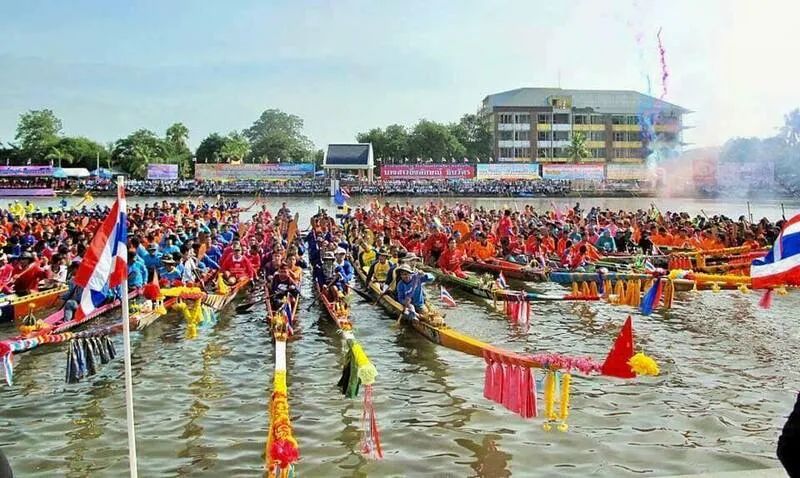
3. Phimai Boat Race Isan culture after the end of Buddhist Lent but not later than the full moon day of the twelfth lunar month The boat race is a form of play during the flood season that creates unity among the villagers. and people from different villages met It is one way to create harmony in society. Rowers are large, medium and small boats competing until the winner of each class is awarded. During the race, spectators on both sides of the race will cheer as their village boats triumph for joy. Phimai Boat Race has developed a traditional boat race to be a boat race of Thailand And is integrated into the Phimai Festival in November every year. has inherited wisdom and craftsmanship In boat building, maintenance is a harmonious process. social engagement firmly Has preserved and inherited a good local tradition to maintain with the community.
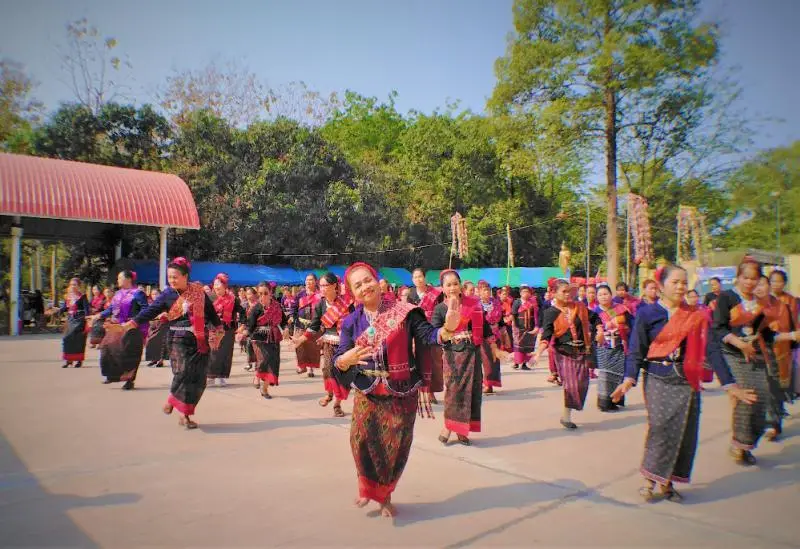
4. Hit Sip Kong Sip Northeastern culture People from Amnat Charoen Province have a way of life based on Buddhist beliefs Nymph and nature in harmony Traditions and cultures that appear psychologically Objects and rituals are still in accordance with the traditional traditions and culture of the northeastern people in general, namely "Heet Sib Song Khong Sib Sib". which adhered to appear until now Heet Sib Song is a tradition that Isan people continue to practice since ancient times. The word "Heet" has the same meaning as the word "Ret" which means tradition, therefore "heat twelve" Therefore, it refers to the tradition that Isan people have to behave in the twelve-month cycle of the year. If anyone disobeys it, it is considered an offense, it is called "wrong heat" General society will be disgusted. Heat Tsip Song is a provision that the ancient Isaan philosophers was established for people in the community to engage in activities together This allows people in the community to have the opportunity to meet once a month. It is also a general tradition of Isaan society therefore adhering to strict adherence to Heat Twelve Most of which are merit-making events that are mainly related to Buddhism. By starting to make merit since the month of Ai (December) Heet Sib Song, making merit in the year has 12 months.
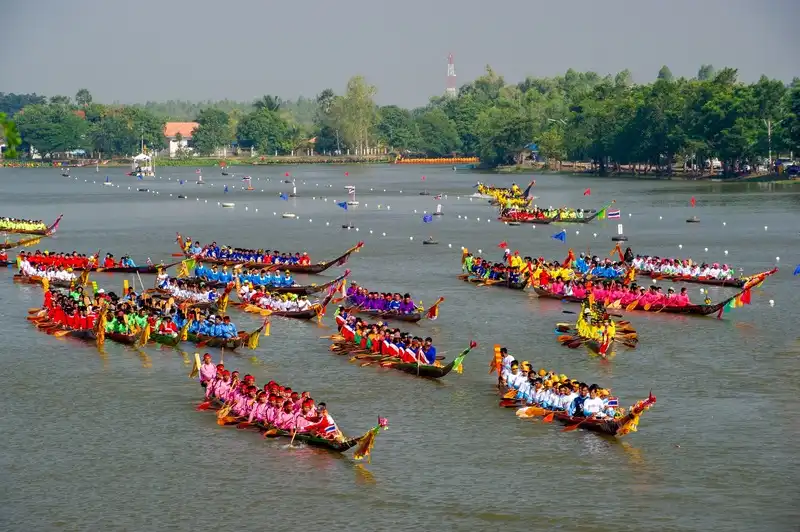
5. Traditional Long Boat Race northeastern tradition held in front of Chanuman District Office which is adjacent to the Mekong River There is a boat from Don Tan District. Mukdahan Province Boat from Khemmarat District Ubon Ratchathani Province and boats from the Lao People's Democratic Republic to join the competition to build friendships. There are booths selling products and entertainment at night. held during the month October every year.
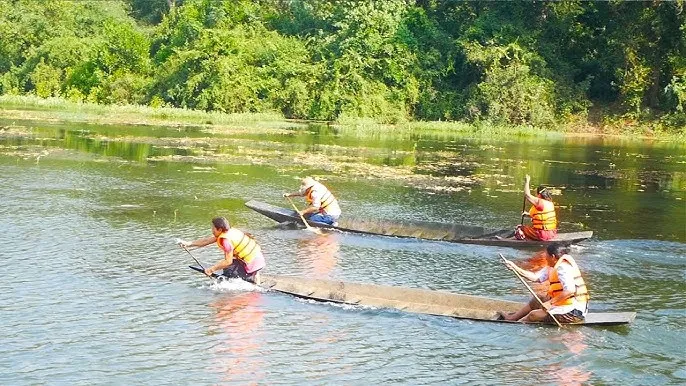
6. Small Boat Races Thai traditions are traditions that are held every year. It is a collaboration between Khok Kong municipality and people in various communities. The small boat race is a local tradition of communities along the Mekong River Basin. which is a connection between communities give love and unity and creating a community learning center to preserve the good culture of the community.
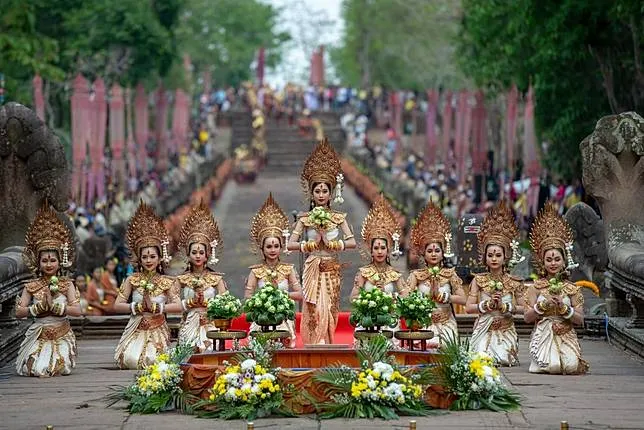
7. Khao Phanom Rung Mountain Tradition Thai culture and traditions during the month of April every year (Full moon day of the fifth month) Khao Phanom Rung Tradition Started for the first time in the year 2481 by the initiative of Chao Khun Opas Dharma. from Wat Tha Prasit Surin Province who traveled to practice Vipassana Meditation at Khao Phanom Rung which at that time there was no way to go up to the castle It is the day when the general public joins to make merit and pay homage to the replica of the Buddha's footprint. That is enshrined in the little pagoda and gives the villagers the opportunity to meet and exchange knowledge and experience. especially silk weaving because during the uphill tradition Villagers, women and men will dress in the most beautiful and intricately woven silk to show off their craftsmanship. and the ability to build a reputation of the village and one's own as well And it is also an opportunity for the villagers to see the beauty of Prasat Phanom Rung. And persuade more people to come and visit in the Khao Phanom Rung Festival every year. It shows readiness. Unity of the local people in Prakhon Chai District and nearby and also to preserve local cultural traditions.
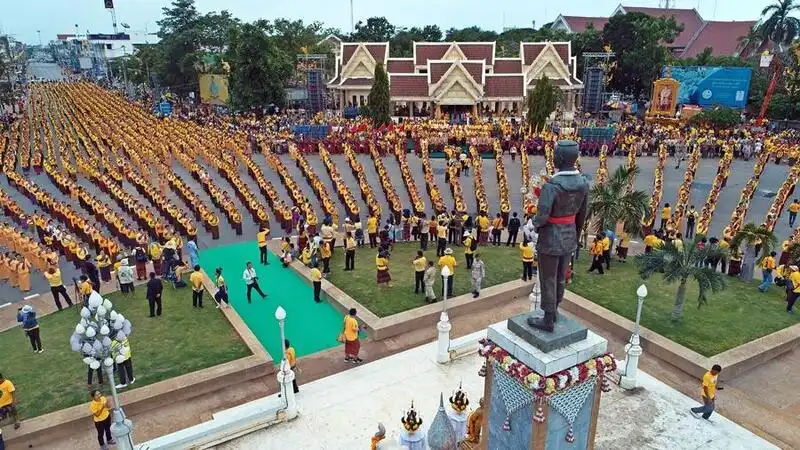
8. Celebrating Chao Pho Phraya Lae Monument Culture and Traditions of the Northeastern Region During the period of January 12-20 of every year, approximately 95 percent of the people in Chaiyaphum are the original local people who have a culture and tradition that combines local traditional beliefs with Buddhist practices. together with the history of the province It has a distinctive feature that emphasizes and glorifies the heroic deeds of honesty and filial piety of Chao Pho Phraya Lae. Thus, there are annual events and traditional events that represent the culture of the province inherited from generation to generation. It was held to commemorate the virtues of Chao Pho Phraya Lae. the first city builder.
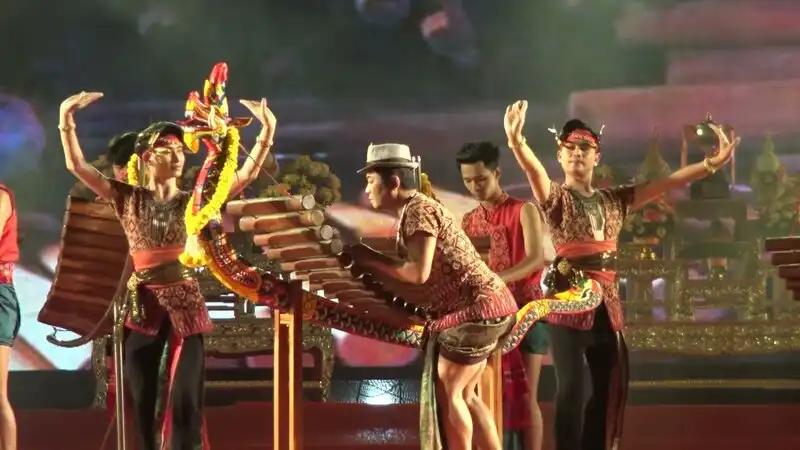
9. Pong Lang Fair Northeastern Tradition During the period from 26 February to 6 March of every year, Pong Lang is regarded as a unique musical instrument and a symbol of Kalasin Province. This is because Pong Lang has changed from a hook or armor. become a natural percussion instrument By a local philosopher of Kalasin province, Mr. Pleang Chairasamee, has developed it into a musical instrument. Played together with other Isan folk instruments until the formation of the Pong Lang band. There are dance moves with the Pong Lang pattern as well as various performances adapted from the natural way of life of Isan rural people. until it is known and generally accepted Pong Lang Fair Praewa and the Kalasin Red Cross Fair It is a local tradition of the province that is held annually. is widely known People and tourists, both Thai and foreigners, pay attention to this festival. In each year, they come to visit and buy a lot of famous local products of the province. It is another way to promote local industry income. The main objective of this event is to disseminate, revive, and preserve the good local arts and culture traditions.
To support the dissemination of technology knowledge and works of government agencies, both the public and private sectors of the province. for the general public The main focus of the event is the grand inauguration procession that showcases the Local art and cultural traditions built from the motto of Kalasin province that "Pong Lang Loet Lum, Phu Thai Culture, Fabrics.
Praewa Silk, Pha Sawoei Phu Phan, Lam Pao River, millions of years old dinosaurs" that represent love and unity. unison Uniting as one of the people to help sustain honor, reputation and identity of the city of Kalasin to be known in the future.
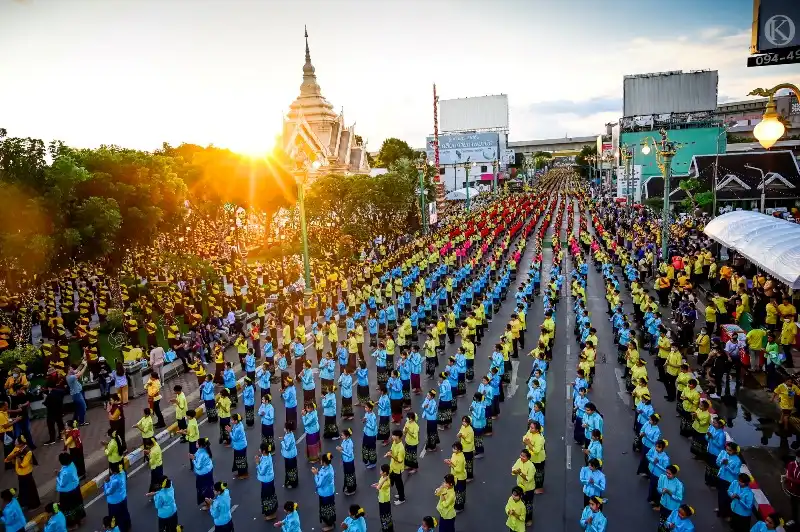
10. Silk Festival and Tiexiao Tradition Northeastern Traditions During 29 November - 10 December of every year, the Silk Festival is an event that Khon Kaen Province has held every year, starting from 1979 to the present, with the objective of promoting the silk weaving career. There are both public and private agencies participating in the exhibition booths displaying products and selling local products (silk) and other souvenirs. There are also performances to revive and promote local arts and culture.
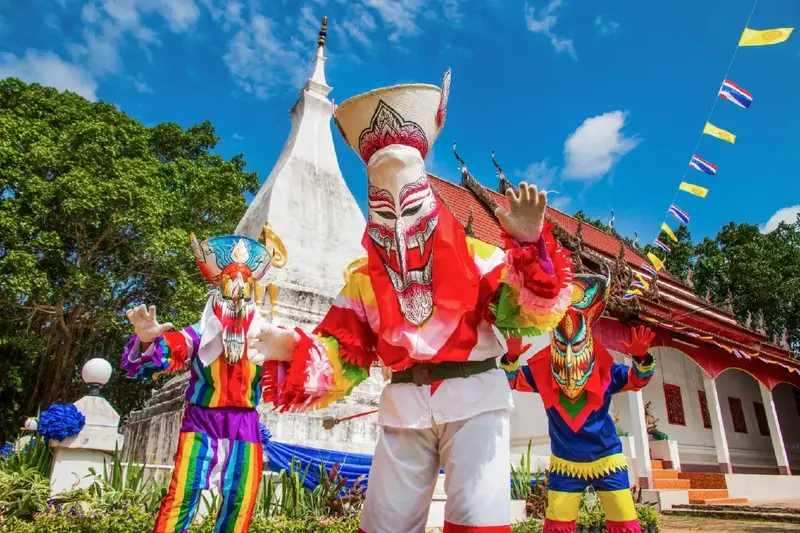
11. Tradition of playing Phi Ta Khon Thai Traditions During the period of May-June of every year, Phi Ta Khon plays have been around for a long time, but there is no clear evidence as to when it has existed. But the villagers have practiced and inherited from their ancestors. It is a unique tradition of Loei Province performed in the "Boon Luang" event, which combines Bun Pha Wet and Bun Bang Fai as one merit. in order to worship the city pillar and the ritual of sacrificing your sacred soul in the past.
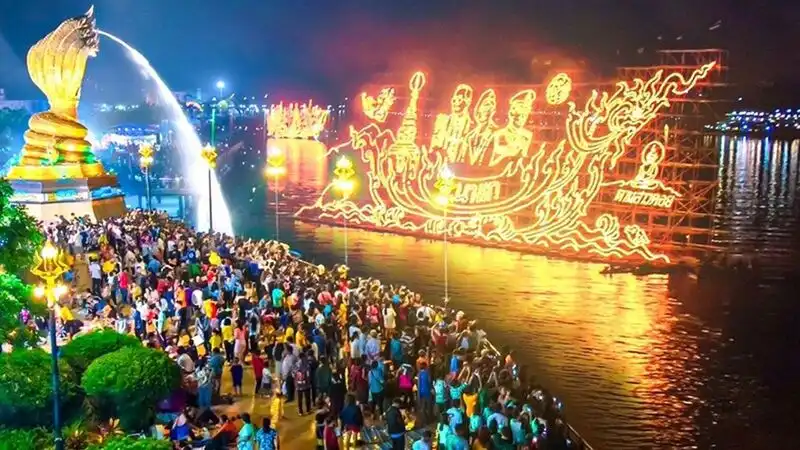
12. Traditional steamboat flow Tradition in the Northeast during the 15th day of the 11th lunar month to the 1st waning day of the 11th month (around October) to worship the Buddha's footprints on the banks of the Nammathanthi River. in the region of Thaksin, India to worship Phaka Phrom to apologize to the river that we have polluted in order to take the fire to burn away the suffering and float away with the river.
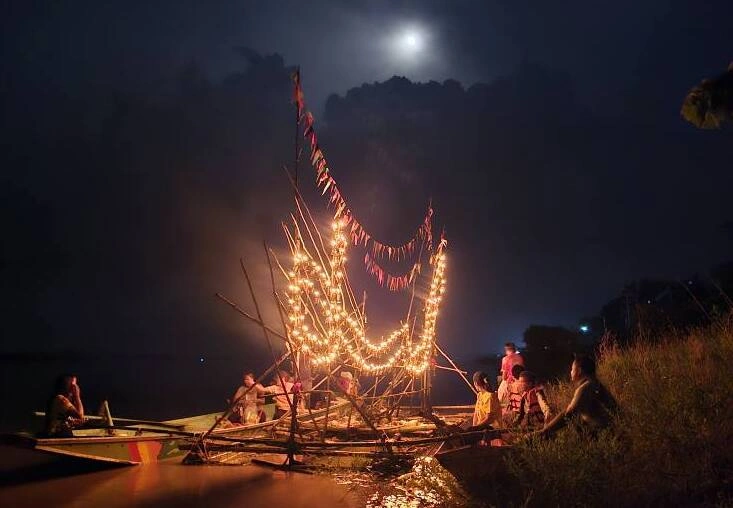
13. Diversion of waters Thai Tradition Time Taken on the 15th day of the 11th lunar month on the end of the Buddhist Lent festival. before the rowing competition Because Mukdahan province is located on the banks of the Mekong River. Therefore, there is a tradition of rowing boats held on the 15th day of the 11th lunar month called the end of the Buddhist Lent. The boat race tradition is considered to worship the Naga 7 families and connect the relationship between the people of Mukdahan and the people of Savankhet. Lao People's Democratic Republic.
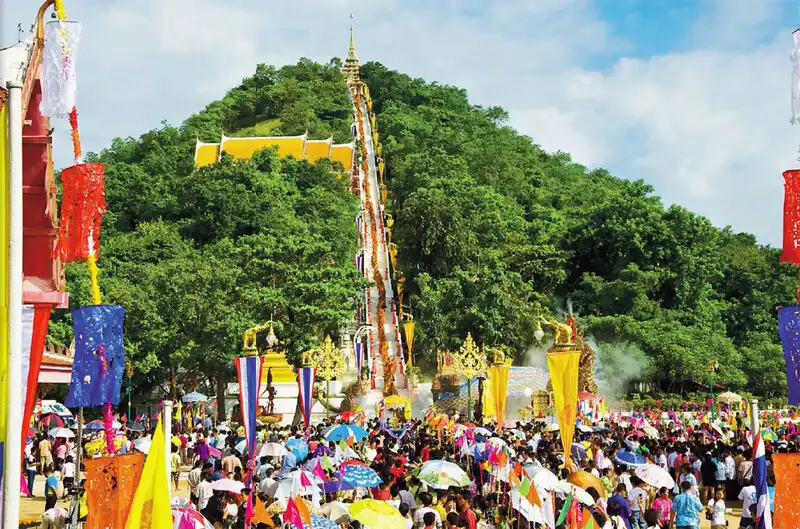
14. Giving Alms to Monks Thai culture during the 1st day of the waning moon of the 11th lunar month to commemorate the Lord Buddha's kindness to the Buddha and to inherit important traditions in Buddhism to celebrate the Lord Buddha's return from the deva world.
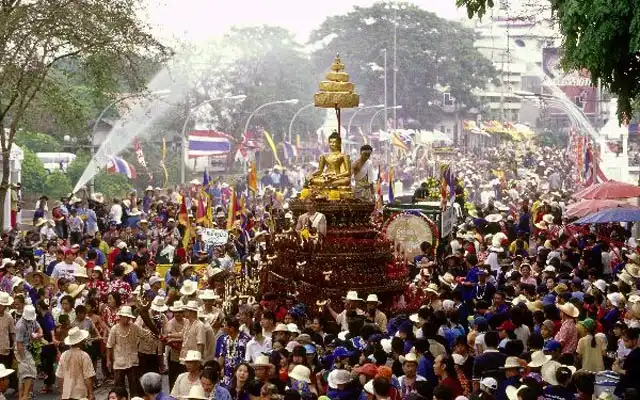
15. Songkran Festival Thai Tradition During the period of April 13-15 of every year, for people to pour water on Luang Pho Phra Sai by government officials, merchants, people were brought down to be enshrined on the vehicle. Then bring it out to parade around the city for the people to bring the perfumed water to wash all over the place. Organizing activities on the New Year's Day is organized according to the traditions that have been practiced since ancient times. This is to create unity, enjoyment and local belief that When performing various activities or rituals according to tradition, it will cause happiness and prosperity to the country. and the community forever.
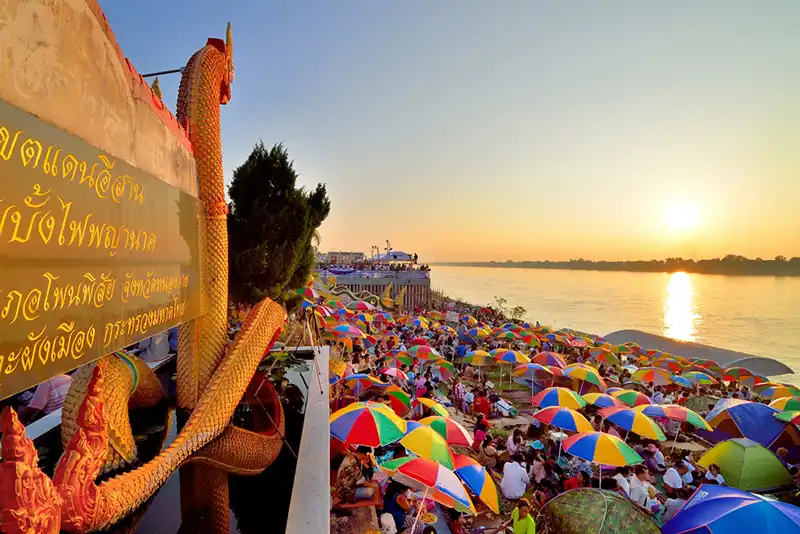
16. Naga Fireball Festival The festival starts in October. or november The Naga Fireball Festival, a tradition in the Northeast, takes place during the end of Buddhist Lent every year. in the provinces bordering the Mekong River especially in Nong Khai province In the middle of the night until dawn of that day, there will be lights or “fireballs” Emerging from the middle of the Mekong River in various areas, it is astonishing for those who see it. The villagers believe that the fire is caused by a serpent who lives under the Mekong River, spitting fire to offer as an offering to the Buddha. And some say the lights are made by the villagers to attract tourists. Some say it's caused by the chemical reaction of the soil beneath the river. but no matter what caused “Bung Fai” It is still a wonderful thing that should be seen once. In addition, festivals held in each area often have lights rising from the Mekong River. It is still something that cannot be missed. because there is often a measurement The exhibition of local products and local performances for tourists to be thrilled all day and night.
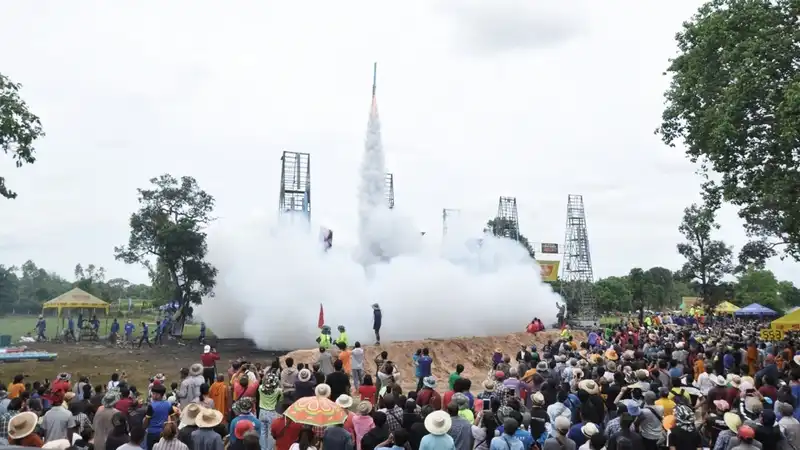
17. Bun Bang Fai Festival It is a local Thai tradition of Isan people. related to the way of life and religious beliefs of the Isan people for a long time by before the farming season The rocket must be lit up to worship Phaya Tan. god of rain let the rain come down for abundance in agriculture It is one of the traditions of the northeastern region of Thailand, including Laos, with a legend originating from the folktale of the Northeastern region about Phraya Khan Khak. The story of Pha Daeng Nang Ai which in folk ways mentioned The villagers held a merit making ceremony to worship. Phraya Thaen or Thepwatsakan Thepbut, which villagers believe Phraya Thaen is responsible for taking care of the rain. seasonally correct and has a great love for fire If any village does not organize the event Bun Bang Fai Worship will cause the rain not to fall according to the season may cause Disaster to the village. Bang” means ”wooden barrel” Fireballs are fireworks made from bamboo tubes compressed with gunpowder to explode into the air. Sacrifice Phaya Tan.
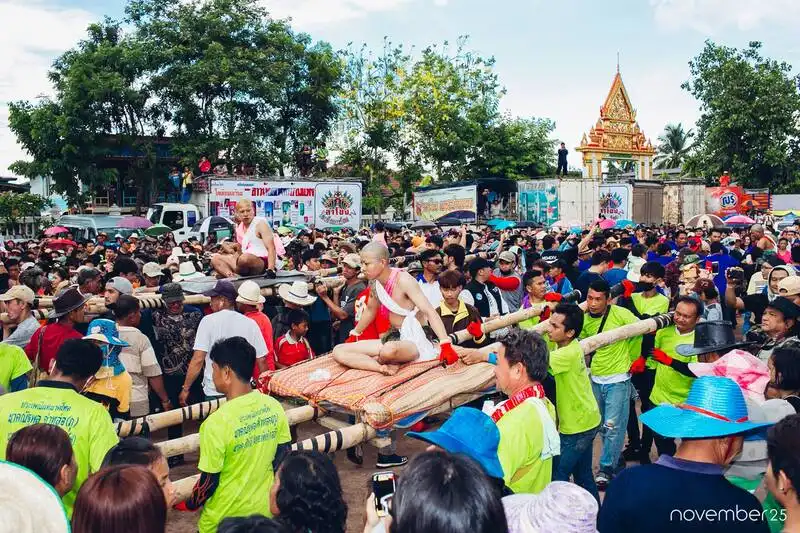
18. Watching the Naga Parade Festival An ancient tradition that has been handed down for hundreds of years. In order for the children to be ordained instead of their parents by taking a Naga parade from their own homes around the village. It uses young men who have not been ordained in each village. help carry bamboo litter Naga parade around the village and violently shake the Naga Anyone who likes excitement shouldn't miss it.
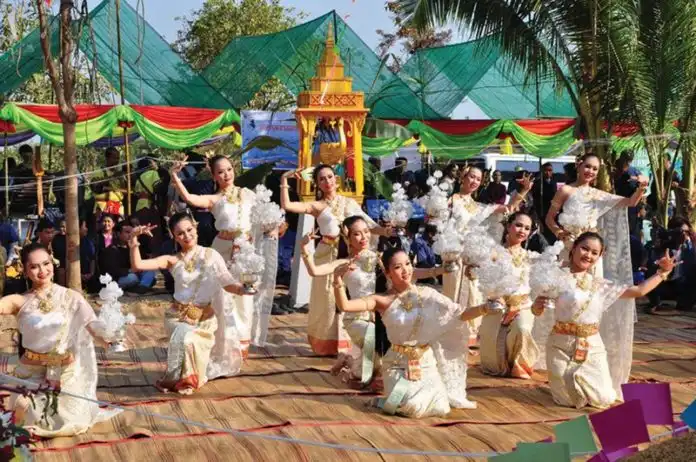
19. Boon Berk Fah Festival During the 3rd day of the waxing moon, the 3rd month of every year, which is a tradition of the Maha Sarakham people based on the belief that The sky will begin to unlock the rain door. with the sound of thunder And the direction of the thunder is a sign that determines the amount of rain that will fall to nourish agriculture in that year.
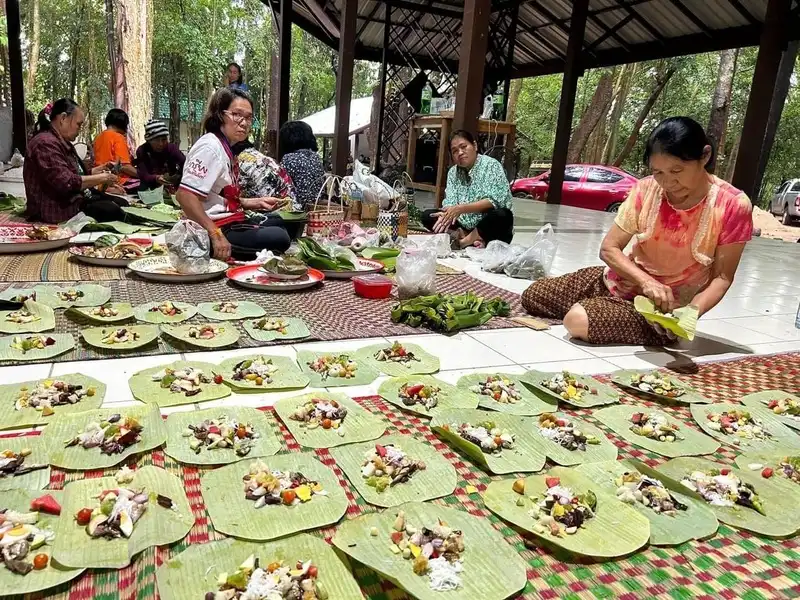
20. Bun Khao Rak Festival During the month of October (the 15th day of the 10th lunar month), Yasothon Province is an Isan tradition held to dedicate merit to those who have passed away. and to dedicate charity to hellish creatures or imp.
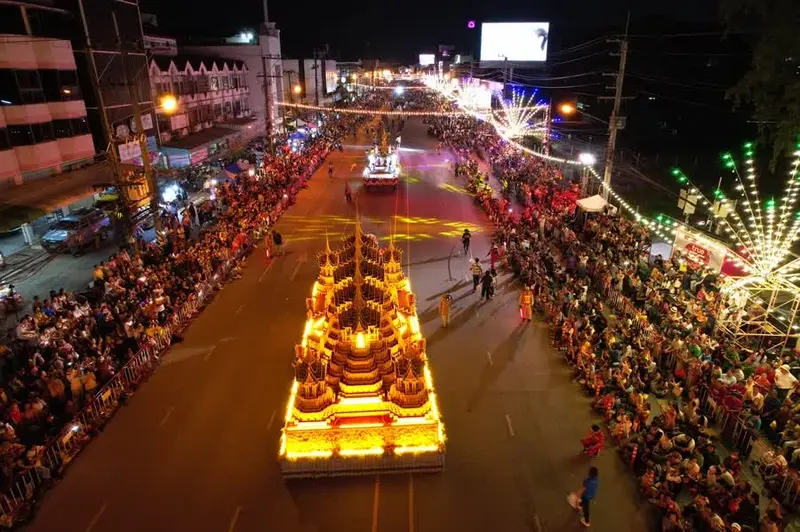
21. Bee castle parade tradition Prasat Phueng Parade Festival is a merit-making event of the Northeastern people. Especially in the province of Sakon Nakhon. practiced during the end of Lent During the 12th - 13th day of the 11th lunar month, making a bee castle Derived from the time of the Buddha Lord Buddha went to stay in heaven On the 15th day of the 11th lunar month, the Lord Buddha will return to the human world. Indra therefore created 3 types of stairs. To be in a beautiful castle, one must do good deeds. make merit, make merit and must behave in accordance with the principles and built a castle of merit in the human world first Because of this, a castle was built. And the tradition of the Prasat Bee parade was born.
The art and culture of the Northeastern region as a whole are as follows.
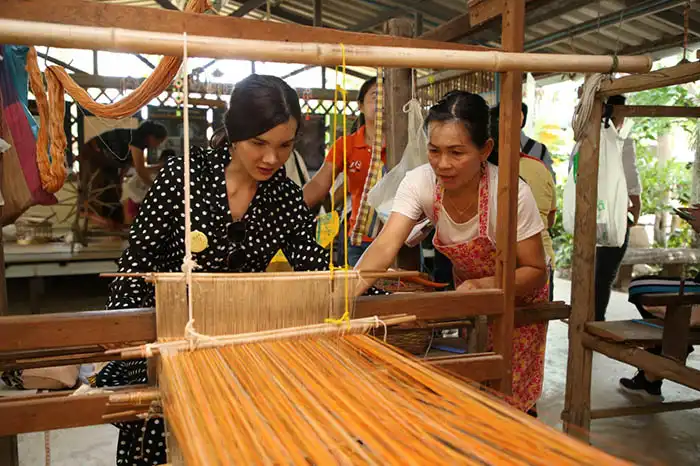
Weaving has been inherited continuously from generation to generation. The type of fabric is silk and cotton, such as Mudmee silk, (Note that the word Mudmee is a type of weaving process. by the method of tying the yarn before dyeing it for further weaving).
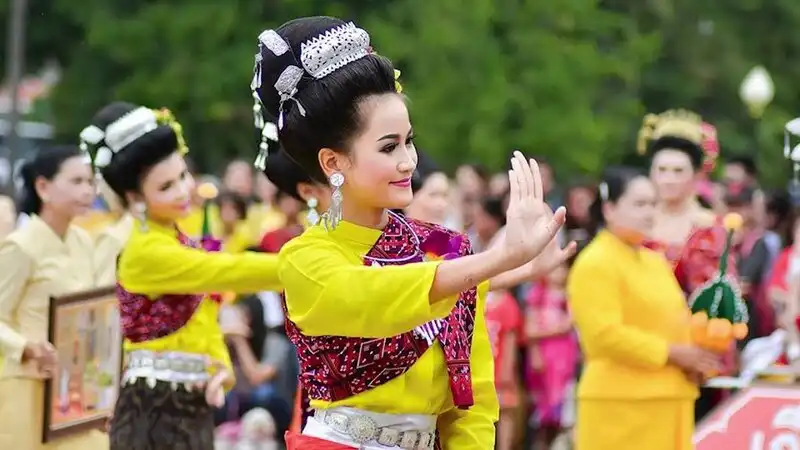
Folk songs It can be divided into two types: ritual songs and play songs.
1. Ceremonial songs include songs used in perform a sacrifice ceremony or used in Show or preach Dharma, such as Lam Phra Vet (sermon on Phra Vessantara Jataka or Mahachat Sermon), also known as Sermon Lae, Lam Phi Fah, which is a ritual to heal the sick, and the music used for the ceremony Bai Sri Su Khwan.
2. Play and play songs include Mo Lam Phuen, Mo Lam Klon, Mo Lam Phloen, and Korat songs, etc.
Dance There are types of dances used in ceremonies such as Phi Fah dance, Phu Thai dance, Tai Dam dance, Seng Bang Fai and Bai Sri dance, etc. Dance for fun includes Rampong Lang, Seng Swing, Seng Katip, Klong Tum dance and Klong Yao dance. Isaan etc.
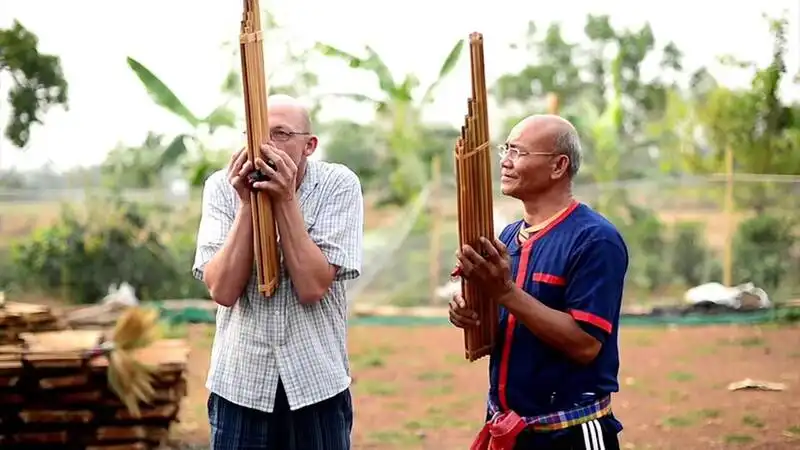
Isaan musical instruments Wood instruments are Khaen, Vot, and Pisai, stringed instruments are harp, flute, and string instruments such as So Kantrum.
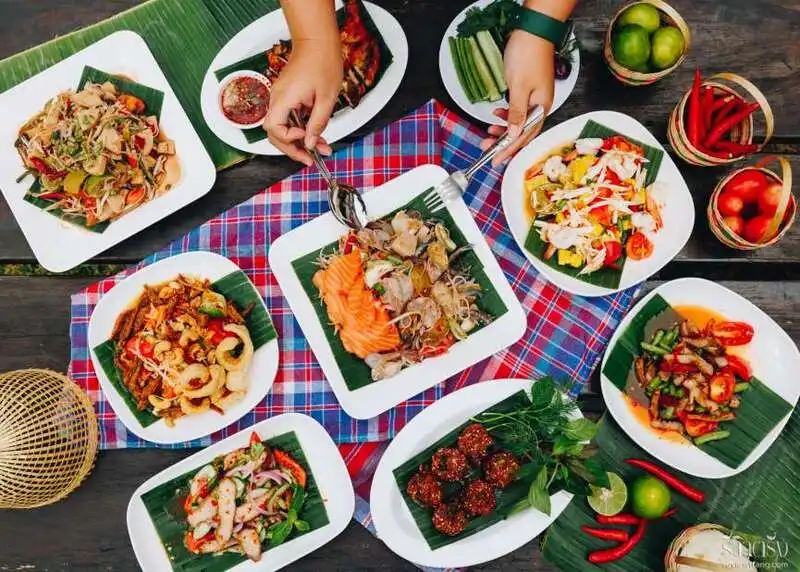
Northeastern food The most popular local food in the Northeast is Papaya Salad, which is made from raw papaya chopped into strips and seasoned strongly. In addition, there are fermented fish, larb, koi, curry with vegetables, curry om, stir-fried noodles with Korat, and Isaan sausages, etc.
Comment
| Keyword (Advance) |
 Region
Region
|



 Category:
Category:  Group:
Group: